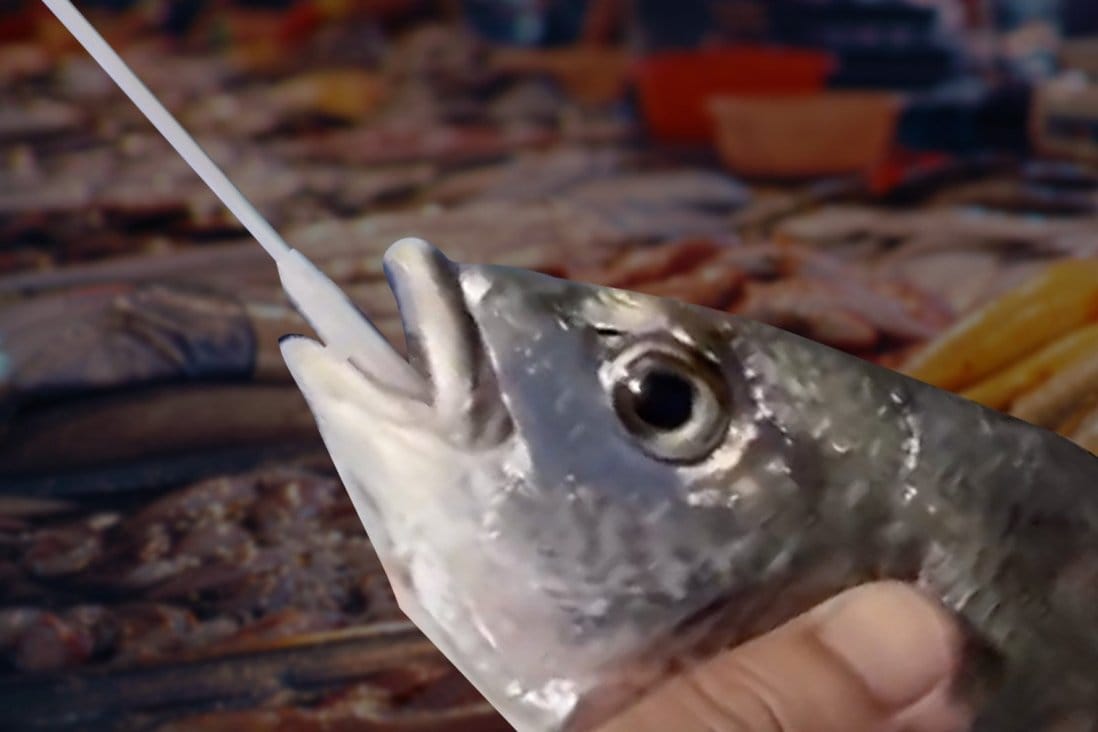In mid-August, the media reported that in China they now do PCR tests for coronavirus infection even on caught fish. We decided to check whether fish can really be carriers of the disease or whether this strange precaution is not justified.
Information about PCR testing of fish appeared in mid-August in many media. They wrote about it in English BBC, The Guardian, CNN, and in Russian - Deutsche Welle, "New news", "Komsomolskaya Pravda", "Moscow 24" And "RIA Novosti" It is reported that this is an initiative of the administration of the city of Xiamen in Fujian province. There they now check not only the fishermen who came from the sea, but also their catch: fish, crabs and even shrimp. PCR tests for fish are taken with a cotton swab from the oropharynx, for crabs - by washing from the underside of the shell, the media does not write about the method of testing shrimp. IN Internet Also posted many video And photo seafood testing process. Also reported, that the hippopotamus from the Huzhou Wildlife Park, as well as giant pandas, are now subject to mandatory PCR testing once every two weeks.
From numerous popular science publications about coronavirus infection in the media widely known information that the SARS-CoV-2 virus “clings” to special cells of the lung tissue. More detailed publications indicate, What dot the entry of the virus into the cell is angiotensin-converting enzyme 2, or ACE2. One could conclude: since Covid “clings” to a certain enzyme in the lungs, but fish and crustaceans, which include crabs, do not have lungs, it means that the virus simply has nowhere to attach. However, not everything is so simple and obvious.

Although ACE2 is most often written about in the context of lung tissue, it is present in most tissues of the body: on the membranes enterocytes (intestinal cells) endothelial cells (lining the inner surface of arteries and veins), smooth muscle cells in most internal organs. The mRNA for ACE2 was discovered even in cells of the cerebral cortex, brain stem and some other structures (for example, in the striatum and hypothalamus). It is the presence of ACE2 on brain neurons and its damage by the SARS-CoV-2 virus leads to permanent loss of smell, parosmia (a condition when, instead of the usual odors, a patient who has suffered from Covid experiences fetid ones) and neurological deficits, also observed with COVID-19 disease.
At the same time, ACE2 expressed not only in humans, but also in other vertebrates and even invertebrates. In 2020, a group of Chinese scientists studied the structure of the ACE receptor in different species, compared it with the human one and built a phylogenetic tree - a diagram reflecting the evolutionary relationships between different species.

Scientists have come to a clear conclusion: the low genetic similarity of ACE2 in humans and fish negates the possibility of human infection with the virus in aquatic food animals. At the same time, the study notes that there is a large group of mammals that are potentially susceptible to coronavirus infection. The article was published in November 2020; accordingly, it was submitted to the journal even earlier. At the same time, information about coronavirus infection in minks appeared also in November 2020, and white-tailed deer - in 2021. Thus, the theoretical calculations of Chinese scientists have been confirmed in practice.
Back in 2021 World Organization for Animal Health published data regarding the possibility of infection (high / low / none), route of infection (in the natural environment or in the laboratory) and the presence of symptoms of infection in 16 species of animals, including farm animals. Poultry, pigs and cattle, even when deliberately exposed to the virus, either did not become infected at all or only a very small percentage of animals became infected. But companion animals (cats, rabbits, Syrian hamsters and ferrets) were infected with a high degree of probability. In April 2022, the organization published updated data on outbreaks among animals. Infections have been recorded among otters, snow leopards, hyenas, binturongs (members of the civet family), hippopotamuses and anteaters. The only marine life on the list is the West Indian (or American) manatee, which is a vulnerable species that is hunted prohibited. Moreover, as the name of the animal suggests, it lives along the Atlantic coast of North, Central and South America, and not off the coast of China.
2021 Chilean-Canadian Joint Study emphasizesthat fish, in principle, do not infect humans with zoonotic (transmitted from animal to human) infections. Transmission of the virus does not occur even when the fish carries the virus (for example, the San Miguel sea lion virus, also known as porcine vesicular exanthema virus). Scientists note that cold-blooded animals are highly resistant to mammalian and avian viruses that replicate at a temperature of 37 °C. Food and Agriculture Organization of the United Nations notes: “There is no evidence to suggest that SARS-CoV-2 can infect aquatic food animals (eg, fin fish, crustaceans, molluscs, amphibians).”
The most comprehensive study on fish susceptibility to coronavirus infection held in China in January 2022. A group of scientists from the Wuhan Institute of Virology infected three fish cell lines containing ACE receptors with the virus: a skin cell line of a fathead minnow (a species of cyprinid fish), the kidneys of grass carp (also a cyprinid fish), and the caudal artery of a bluegill sunfish (family Centrarchidae). The Vero (African green monkey kidney) cell line, one of the most popular lines used for scientific research in the fields of biology and pharmacology, served as a control group. Fish cells were cultured at 24°C and mammalian cells at 37°C. Then the cell lines were “cared for” - nutrients were introduced and the process of finding them in a living organism was simulated. Subsequently, neither immunofluorescent analysis (ELISA test) nor PCR showed the presence of the virus on fish cell lines, while the tests detected the SARS-CoV-2 virus on the Vero line, that is, the experimental conditions were favorable for the reproduction of the virus in principle. Scientists concluded that SARS-CoV-2 can attach to fish cells, but cannot enter or replicate in fish cells. They explained this by saying that among the 20 key sites (specific elements) that interact with the SARS-CoV-2 receptor domain, only one or two critical residues in each fish cell line are identical to human ACE2. In simple terms, fish receptors are so different from human ones that the coronavirus “does not recognize” them. Scientists also took cells from the HeLa line (human cervical cancer) and using plasmids (small DNA molecules) imitated the lines of zebra fish, tilapia, catfish, salmon and rainbow trout. The way the virus replicated well on the original HeLa line and failed to replicate on the modified one also confirmed the fact that SARS-CoV-2 cannot use fish ACE2.
It is worth noting that the Chinese initiative to test fish has been criticized by scientists. For example, Professor Jin Dongyang of the School of Biomedical Sciences at Hong Kong University named The Chinese initiative is a waste of resources. Chinese users, in turn, make fun of initiative and propose that the authorities oblige fish to observe a seven-day quarantine and limit their movements across the ocean.
Thus, the knowledge accumulated to date indicates that none of the existing variants of coronavirus infection infect fish, mollusks and crustaceans. Consequently, the Chinese initiative regarding marine life in the current conditions is useless, which cannot be said about testing the hippopotamus, since these artiodactyls still become infected with coronavirus infection. At the same time, the virus really may be determined on products, including seafood, if during the extraction or preparation process the product itself or the surfaces it touched were contaminated (contaminated) with a virus.
Cover image: South China Morning Post

Not true
Read on the topic:
- Is it true that you can become infected with prion diseases through the coronavirus vaccine?
- Is it true that coronavirus was found in Chinese ice cream?
If you find a spelling or grammatical error, please let us know by highlighting the error text and clicking Ctrl+Enter.






